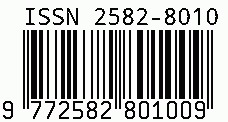
International Journal of Leading Research Publication
E-ISSN: 2582-8010
•
Impact Factor: 9.56
A Widely Indexed Open Access Peer Reviewed Multidisciplinary Bi-monthly Scholarly International Journal
Plagiarism is checked by the leading plagiarism checker
Call for Paper
Volume 6 Issue 4
April 2025
Indexing Partners



















Comprehensive Analysis of HIPAA: Privacy, Security, and Compliance in the Digital Healthcare Era
| Author(s) | Kiran Veernapu |
|---|---|
| Country | United States |
| Abstract | The Health Insurance Portability and Accountability Act (HIPAA) of 1996 is a foundational regulatory framework designed to protect patient information within the healthcare industry in the United States. With the increasing digitalization of healthcare records and the proliferation of electronic health information exchange, HIPAA has become more relevant than ever in ensuring that sensitive patient data is handled with the highest degree of confidentiality, integrity, and security. This paper examines the key provisions of HIPAA, focusing on its guidelines for the privacy and security of healthcare data, including its implications for healthcare providers, business associates, and patients. Furthermore, the paper explores the challenges of compliance, the role of HIPAA in the digital age, and the future of healthcare privacy in light of technological advances. |
| Keywords | HIPPA guidelines, Healthcare, patient privacy, patient data security |
| Published In | Volume 2, Issue 5, May 2021 |
| Published On | 2021-05-12 |
| Cite This | Comprehensive Analysis of HIPAA: Privacy, Security, and Compliance in the Digital Healthcare Era - Kiran Veernapu - IJLRP Volume 2, Issue 5, May 2021. DOI 10.5281/zenodo.14673207 |
| DOI | https://doi.org/10.5281/zenodo.14673207 |
| Short DOI | https://doi.org/g8z64t |
Share this


CrossRef DOI is assigned to each research paper published in our journal.
IJLRP DOI prefix is
10.70528/IJLRP
Downloads
All research papers published on this website are licensed under Creative Commons Attribution-ShareAlike 4.0 International License, and all rights belong to their respective authors/researchers.

